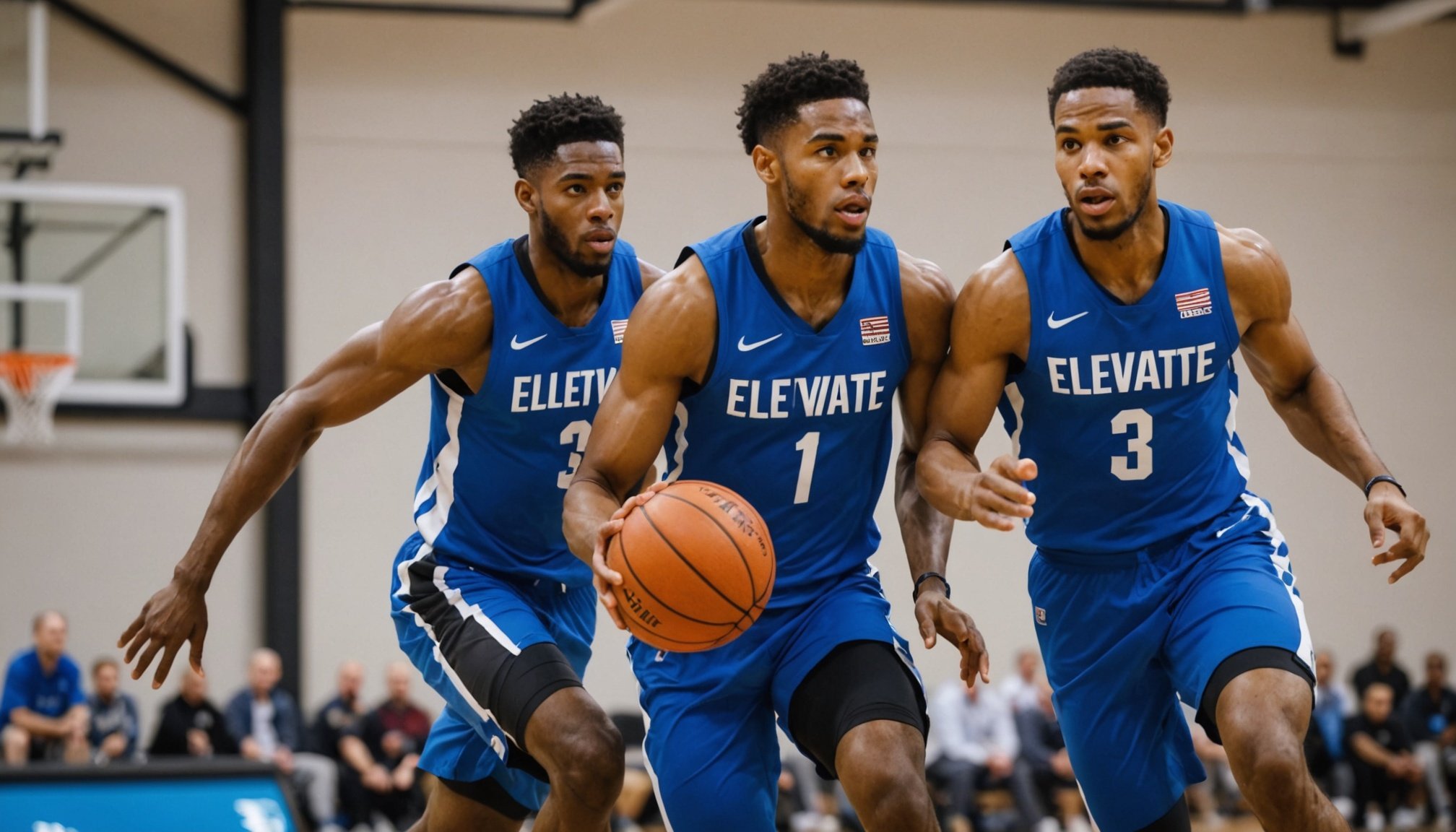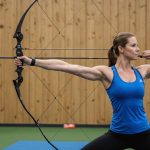Understanding Cardiovascular Fitness for Basketball Players
Cardiovascular fitness plays a pivotal role in enhancing basketball performance. It underpins the endurance required to maintain intensity through games’ relentless paces. A well-rounded athletic training regimen is essential, focusing on optimizing cardiovascular capabilities for superior results.
Importance of Cardiovascular Fitness in Basketball
Basketball demands robust endurance. Players often sprint up and down the court, requiring a cardiovascular system in peak condition to sustain energy levels and agility. Enhanced cardiovascular fitness ensures players remain vigorous until the final whistle, outlasting opponents and reducing fatigue-associated errors.
Topic to read : Mastering game-time choices: essential tactics for elevating uk basketball players” decision-making skills
Key Components Contributing to Overall Fitness
To achieve optimal cardiovascular fitness, consider these components:
- Aerobic capacity: The efficiency of the heart, lungs, and muscles to work together.
- Anaerobic threshold: The ability to sustain high-intensity outputs without fatigue.
- Recovery rate: How swiftly a player can bounce back from intense physical efforts.
Connection Between Endurance and On-Court Performance
Basketball performance is directly tied to a player’s cardiovascular endurance. Greater endurance translates to faster recovery during downtime and the capability to maintain peak performance levels throughout games. Endurance also contributes to sharper decision-making and reactions under pressure, crucial for game-winning plays. Hence, integrating cardiovascular fitness into athletic training is vital for basketball success.
Also read : Mastering the game: proven strategies for uk basketball players to boost hand-eye coordination in shooting
Benefits of Interval Training for Basketball Athletes
Interval training offers significant fitness benefits for basketball athletes, focusing on improved cardiovascular fitness and overall athletic performance. By alternating between periods of high-intensity effort and lower-intensity rest, interval training efficiently enhances physical conditioning.
How Interval Training Improves Cardiovascular Fitness
Interval training targets both aerobic and anaerobic systems, essential for basketball players who need to transition quickly between offense and defense. High-intensity bursts train the heart to pump blood more effectively, increasing oxygen delivery to muscles. Additionally, these exercises raise the anaerobic threshold, allowing players to maintain higher intensity for longer without fatigue.
Specific Advantages for Basketball Players
A structured interval training program leads to tangible benefits such as increased agility, endurance, and speed on the court—crucial elements in the fast-paced game of basketball. Moreover, it sharpens the recovery rate, which is vital during fast breaks and quick turnovers. Players often experience an improvement in peak performance, maintaining energy and focus throughout entire games.
Scientific Backing for Interval Training Effectiveness
Research supports interval training as highly effective for cardiovascular fitness. Studies have shown it not only reduces fatigue but also boosts endurance and overall athletic performance. By integrating scientific principles, training becomes both purposeful and efficient—a game-changer for those serious about enhancing their basketball performance.
Specific Interval Drills for Basketball
To elevate both endurance and skill on the court, integrating diverse basketball drills into an interval training routine can be highly beneficial. Tailored training exercises boost cardiovascular fitness and enhance game agility.
Sprint and Recovery Drills
Sprint and recovery drills emphasize short bursts of high-intensity sprints followed by active recovery periods. These are vital for simulating game situations where quick transitions are necessary. For instance, executing 30-second full-court sprints followed by 60 seconds of light jogging mimics the transition between offense and defense.
Agility and Cardio Combinations
Pairing agility drills with cardio elements builds both footwork and fitness. An example would be weaving through cones at high speed, followed by lateral shuffles and short rest intervals. This not only enhances cardiovascular fitness but also translates to improved on-court movement.
Endurance Circuit Training
Endurance circuit training combines multiple exercises like jump ropes, shuttle runs, and push-ups, with minimal breaks between sets. These circuits improve overall endurance by maintaining elevated heart rates over extended periods. Notably, using a heart rate monitor during these sessions could help in keeping effort levels consistent and optimizing results. Tailored and varied, these drills are pivotal in crafting well-rounded basketball athletes.
Expert Tips for Maximizing Training Results
In the pursuit of peak performance enhancement, incorporating expert advice into your training regimen is crucial. Avoiding common mistakes during interval training can significantly impact your progress. One frequent error is neglecting proper form; maintaining technique is paramount, particularly during intense periods. Equally important is ensuring a balanced approach, avoiding overtraining by respecting rest days.
Nutrition and hydration play pivotal roles in maximizing training results. Fueling your body with a balanced diet rich in proteins, carbohydrates, and essential fats provides the energy needed for arduous basketball drills. Proper hydration ensures optimal physiological function and prevents cramping during strenuous workout sessions. Hydration strategies should include drinking water before, during, and after training.
Recovery is an often overlooked yet critical component in athletic performance. Integrating adequate rest into your schedule allows muscles to repair and strengthen, enhancing future training outcomes. Post-training recovery techniques such as stretching, foam rolling, and even professional massages assist in reducing muscle soreness and preventing injuries.
By heeding expert tips, embracing comprehensive training tips, and prioritizing key elements such as form, nutrition, hydration, and recovery, athletes can pave their way towards achieving exceptional fitness levels and improving overall athletic performance.
Designing an Effective Interval Training Program
Designing an effective interval training program is essential for maximising athletic performance in basketball. Your basketball drills should be structured to enhance specific skills while boosting cardiovascular fitness.
Key Principles of Interval Training
Intervals are grounded in alternating bouts of high and low intensity. Central to successful interval training is balancing intensity and rest to prevent overexertion. For basketball, incorporate intense sprints followed by shorter recovery to simulate game play’s pace. This trains athletes to manage energy strategically on the court.
Structuring Workouts for Optimal Results
Structure workouts to incorporate specific basketball drills focused on speed, agility, and endurance. Begin with a vigorous warm-up, proceed with targeted drills, and conclude with cooldown to support muscle recovery. This approach ensures a comprehensive routine stimulating both physical fitness and on-court abilities.
Frequency and Duration Recommendations
For profound impact, a training schedule should ideally include three to four interval sessions weekly. Each session should last 30-60 minutes, depending on the athlete’s fitness level and goals. It’s crucial to maintain consistency while progressively increasing intensity and duration once foundational fitness is established. This fosters adaptation and ensures continual fitness benefits, paving the way for enhanced athletic performance.
Measuring Progress and Adjusting Your Training
Tracking progress and making necessary training adjustments are essential for ongoing growth in basketball. Regular fitness assessments are vital tools in this process. They help evaluate cardiovascular improvements by analysing endurance, speed, and recovery rates during specific drills and games.
Tools for Monitoring Cardiovascular Improvements
Several methods can effectively track cardiovascular fitness. Using a heart rate monitor provides real-time insights into the athletic training intensity, allowing players to maintain or adjust their efforts as needed. Apps and fitness trackers can log workout duration and count active periods throughout the day, offering a comprehensive view of fitness progression.
How to Assess On-Court Performance Changes
It’s crucial to link improvements in cardiovascular fitness to tangible on-court performance. Coaches often utilise game footage analysis to track changes in speed, agility, and endurance. Comparing statistics over time – like the number of sprints or player speed on fast breaks – can provide clear data on progress.
When and How to Adjust Training Based on Progress
Once you have data, decisions about training adjustments should be made. Increase the intensity or duration of exercises if the player demonstrates steady improvement. Conversely, if stagnation occurs, it may be wise to introduce varied training exercises to stimulate progression and maintain enthusiasm in workouts.
Success Stories from UK Basketball Players
In recent years, integrating interval training programs has transformed fitness journeys for many UK basketball players. These transformations span beyond physical changes and delve into improved basketball performance.
Interviews with Notable Players
Players often express how interval training has been a game-changer. During interviews, they highlight enhanced endurance, reporting how such training allowed them to maintain energy levels through demanding matches. Specifically, the balance of high-intensity workouts and recovery periods is cited as pivotal in their progress. They emphasise these drills in their personal training schedules, underscoring dedication to becoming well-rounded athletes.
Impact of Interval Training on Performance
The impact is also notable in how athletes describe their improved agility and speed. Interval training has contributed significantly to increased on-court agility, allowing players to make quicker decisions and exploit game situations effectively. This increased agility directly correlates to their growing success during matches, often leading to more game-winning plays.
Inspirational Case Studies
The varied experiences of athletes, illustrated through case studies, inspire many newcomers to embrace interval training. These stories not only show physical improvements but also demonstrate rejuvenated performance motivation. Basketball players note that with consistent application of training techniques, their athletic performance has reached new heights, embodying the principles of effective cardiovascular fitness.
















